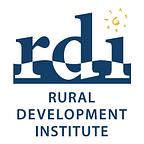Northern Urban Reserves & Municipalities: Economic Development — Part 3 of 3
By Aimee Coueslan
June 5, 2019
Relationship building
A third major theme of the Northern Urban Reserve, Municipality & Economic Development Forum was relationship building. Chief Marcel Moody of Nisichawayasihk Cree Nation, Chief Nelson Genaille of Sapotaweyak Cree Nation, and Tim Johnston, the former mayor of Thompson, discussed their own experiences with the creation of urban reserves. What came up over and over again was the barriers created by a lack of education — about First Nations history in general and the history of particular reserves — as well as what can only be called racism.
Although these barriers are formidable, Tim Johnston told a story to illustrate how even seeming defeat can be an opportunity, as people are spurred to rally together to create change. NCN and Thompson saw this when their first municipal services agreement (required for the creation of an urban reserve) was defeated by a referendum. But at long last, after 18 years NCN was able to complete the Addition to Reserve process to convert the land at the Mystery Lake Hotel and Trappers Tavern to a thriving urban reserve.
Forum attendees broke out into small groups to discuss, among other things, the challenges for First Nations-Municipal partnerships and their potential solutions. Lack of knowledge, power imbalances, and lack of trust were listed as some of the challenges. It was stressed that a lack of cultural awareness and a lack of trust can occur on both sides. And some of the solutions were increased education about the realities of our shared history, agreeing to share in economic and fiscal benefits, trust building through working together.
Gary Merasty, Chief Development Officer and President of NWC Ventures, had a great deal of advice about working together across cultures. In the case of relationships between First Nations and corporations, he stressed the importance of corporations working with Indigenous communities because they understand there’s a good business case for it. It is very damaging when, instead, corporations come to the table because they are forced to (duty to consult) or, even worse, because the corporate executives believe it is the “right thing to do,” while the rest of the organization isn’t behind them. When corporations and municipalities act because they see the positive return on investment for doing so, it is more likely that employees and the public will be on board.
Merasty wisely reminded us that it is always important to take a moment and pause when working across cultures because “reconciliation happens in that little space between stimulus and response.”
Andre Le Dressay of the Tulo Centre also had wise words about relationship-building through working together. He said that a study of 9000 examples of diversity training efforts found that the training simply does not work in reducing racism. In fact, in about half the cases, it made things worse. He said that there are two examples of racism being reduced in a group of people and those examples are WWII and the Vietnam War, when troops were integrated. In other words, the best way to build relationships is for people to work together on practical projects and common objectives. Establishing urban reserves and other rural additions to reserve are a great example of this kind of practical project that gets people working together for the benefit of all. If First Nations and municipalities can get together and take that first step — making a commitment to work together towards the common goal of economic development for everyone’s benefit — real change can happen.
